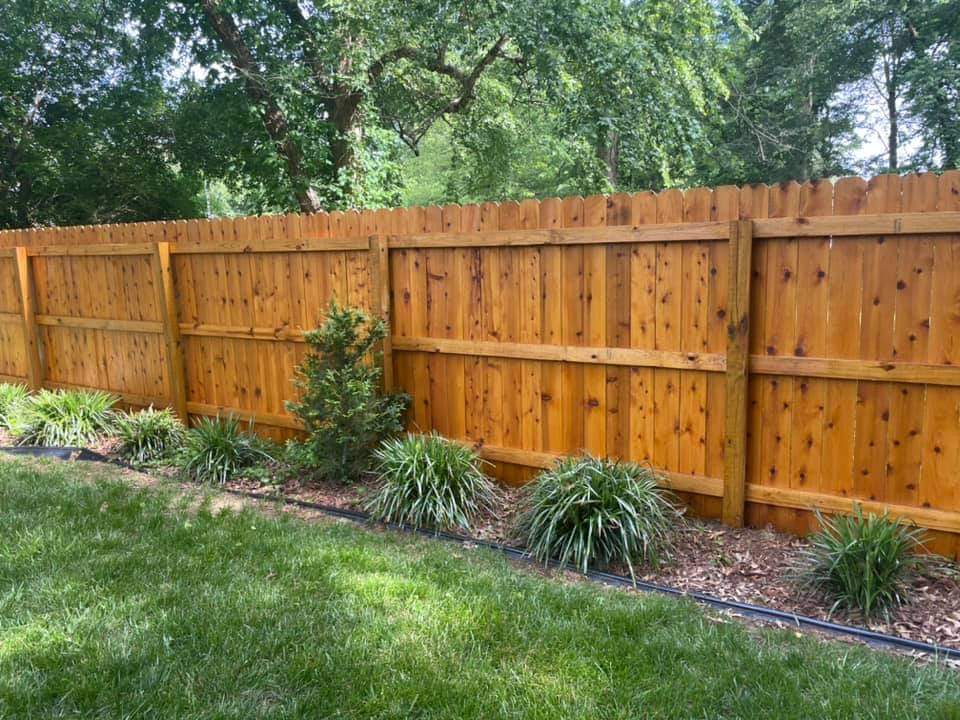Just How to Choose the Right Fence Discoloration for Your Residential Or Commercial Property
When it comes to enhancing the look and durability of your residential property's fencing, selecting the ideal tarnish is an essential decision that needs mindful factor to consider. Just how can you make certain that you pick the best fencing tarnish that lines up with your home's design and upkeep requirements?
Recognizing Wood Types
To pick the appropriate fence stain, it is crucial to have an extensive understanding of the numerous sorts of timber typically utilized for fencing. The selection of wood plays an essential role in identifying the longevity and general aesthetic appeals of the fence. Cedar is a popular option because of its natural resistance to degeneration and bugs, making it a durable choice for outside frameworks. Pine is another typical timber made use of in fence, recognized for its affordability and simplicity of staining. Yearn is a lot more vulnerable to warping and decaying contrasted to cedar. Redwood is a high-end option understood for its striking look and natural resilience, though it features a greater cost. When picking a fencing discolor, it is very important to think about the kind of wood being made use of to ensure compatibility and ideal defense. Understanding the qualities of different wood types will certainly aid you make an informed decision when it comes to selecting the right fence stain for your property - Fence Staining Nashville TN.
Choosing the Right Shade
Selecting a suitable tone for your fence discolor is a critical choice that significantly affects the total aesthetic charm of your property. Lighter shades such as whites or light grays can make a fencing appear bigger and add a touch of sophistication to your home. Eventually, the right color option will certainly boost the elegance of your fence and boost the general visual allure of your home.

Taking Into Consideration Openness Levels
When selecting the appropriate color for your fence tarnish, another crucial aspect to take into consideration is the level of transparency that will best fit your residential property's visual and upkeep requirements. Openness levels in fencing discolorations usually fall into three classifications: clear, semi-transparent, and strong. Take into consideration the degree of direct exposure your fence faces, the preferred upkeep regularity, and the visual you wish to attain when picking the right transparency level for your fence discolor.
Evaluating Maintenance Requirements
Taking into consideration the durability and upkeep of your fencing, reviewing the maintenance demands is critical in identifying the most appropriate fencing tarnish for your building. The degree of upkeep webpage needed for your fencing can differ depending on factors such as the sort of wood, weather conditions in your area, and your individual preferences.
When assessing maintenance requirements, it is important to think about the longevity of the fencing tarnish. Some stains need more frequent reapplication than others, so choosing a stain with a much longer lifespan can help in reducing the overall upkeep demands of your fencing (Fence Staining Service). Furthermore, elements such as resistance to UV rays, water, and mold can influence just how usually you require to re-stain your fence

Testing Examples Before Application
Before using any kind of fencing tarnish, it is recommended to carry out example examinations to make certain compatibility with the wood and preferred aesthetic result (Nashville Fence Staining Services). Checking examples allows you to assess how the tarnish will certainly interact with the particular kind of wood used in your fence, as different woods can take in spots in a different way. To start, pick a tiny low-profile location of the fencing to use the tarnish examples. It is advised to evaluate several tarnish choices on this area to contrast shades and surfaces. Consider how the stain looks when dry, as it may show up various from its damp application. Furthermore, observe just how the discolor matches the existing elements in your outdoor area, such as landscaping or the shade of your home. Make note of how the stain holds up to climate condition like sunshine and wetness. By evaluating samples before full application, you can make an informed choice that improves the overall look of your building while shielding the timber efficiently.
Verdict
In verdict, choosing the appropriate fence stain for your home entails comprehending the timber type, picking the best shade, considering transparency degrees, assessing upkeep requirements, and testing examples before application (Fence Staining Service). By taking these factors into factor to consider, you can ensure that your fence stain complements your building while providing the required protection and resilience. Make a notified choice to boost the appearance and durability of your fencing
 Amanda Bynes Then & Now!
Amanda Bynes Then & Now! David Faustino Then & Now!
David Faustino Then & Now! Freddie Prinze Jr. Then & Now!
Freddie Prinze Jr. Then & Now! Nancy McKeon Then & Now!
Nancy McKeon Then & Now! Batista Then & Now!
Batista Then & Now!